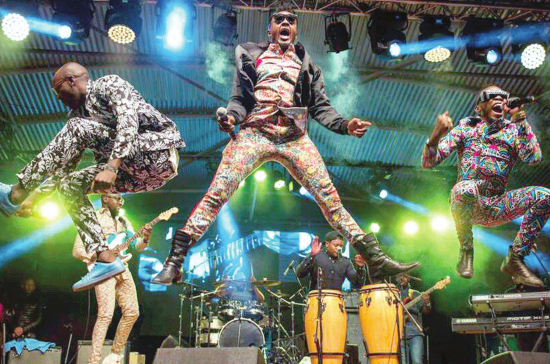Event invasions threaten Kenya’s creative economy, artists and fans
By Victor Mukabi, January 11, 2025The ongoing trend of event invasions is threatening Kenya’s revenue collection from the creative economy, as entertainers increasingly shy away from live performances for their fanbase.
Three major shows have recently flopped due to venue invasions by unknown groups and misconduct by some artistes.
Most notably, Jamaican artiste Shenseea was forced to cut short her performance at the Raha Fest event after teargas canisters were hurled into the venue following a security breach. The commotion erupted just ten minutes into her performance, leaving fans disappointed.
Event goers, many of whom had paid substantial amounts for tickets, were left demanding value for their money. In a widely shared video, a frustrated attendee voiced her dissatisfaction, saying, “We worked hard for our money. How can you perform for just a few minutes? Allow her to come back on stage. We need to see the value of our money.”
Similar incidents have marred other performances. Tanzanian artist Diamond Platnumz had his set cut short after an altercation between his crew and that of Kenyan artist Willy Paul, leaving fans divided. West African artist Rema faced disruptions after an uncontrolled group forced its way into his event venue, further exposing the country’s vulnerabilities in hosting international performances.
Sam Osewe, an event organiser, warned that the country risks losing billions of shillings if the trend continues, as events have direct economic ties to multiple sectors. “These events usually partner with hotels, digital taxis, suppliers, and corporations, among others. When such unfortunate incidents occur, it affects not only the organisers but also the entire ecosystem that depends on these events,” Osewe said.
He added that these disruptions harm the country’s reputation, discouraging international artists from performing in Kenya and reducing government revenue. Additionally, the financial burden of such incidents often falls back on event organisers, who must cover damages out of pocket.
A police officer stationed at the Raha Fest event revealed that deployed officers were compelled to work without pay, raising concerns about the security provisions for artists and attendees.
“I’m a cop, but we are being exploited. There was an event at the racecourse called Raha Fest. Imagine, because it involved some members of a top politician, we were pulled from all over Nairobi to provide security for the entire night with no pay, despite it being a private event,” said the officer, who spoke anonymously.
In terms of security, Osewe emphasized the importance of thorough planning, noting that professional event organisers prioritise security to ensure the success of their events. “When we plan, we conduct risk analysis with professional security agencies and develop multiple security plans. The choice of security measures depends on the event’s location and scale. However, higher security costs often translate to higher ticket prices for consumers,” he explained.
Osewe noted that future events might require stricter security protocols, including multiple checkpoints, to guarantee the safety of both attendees and performers. “It’s critical for everyone to do what is right. Disruptive behaviour not only affects artists but also the suppliers and workers who depend on these events to support their families,” he added.
On the issue of performances, Osewe explained that agreements are typically made between organisers and artists to meet consumer expectations. However, some artists fail to honour their commitments, leading to dissatisfaction among fans. Such incidents can deter sponsors, who expect their brands to benefit from event partnerships.
Citing the Kisumu event where Koffi Olomide performed, Osewe observed that the apparent lack of adherence to agreements led to commotion and dissatisfaction. “What’s at stake here is both the artist’s and organiser’s brand. If an event fails, sponsors may avoid working with those organisers in the future. It’s essential to have clear agreements and accountability,” he said.
Another significant challenge facing the industry, according to Osewe, is the lack of proper event venues, such as indoor arenas, that can accommodate large crowds. “In countries like Rwanda, they have modern indoor arenas.
Here, we only have the Kasarani Indoor Arena, which can hardly accommodate 5,000 people due to its condition. International artists are drawn to countries with fully equipped arenas, complete with sound systems, lighting, and other necessities, eliminating the need for extensive setup by organisers,” he explained.
This lack of infrastructure limits Kenya’s ability to host large-scale, high-quality events that attract global performers and sponsors. Osewe urged relevant authorities to address this issue to unlock the industry’s full potential.
He also encouraged investors to maintain confidence in the country’s events industry, expressing optimism about its future. “There’s still room for improvement. We can address our flaws and grow the industry. Please don’t lose faith in us,” he said.
